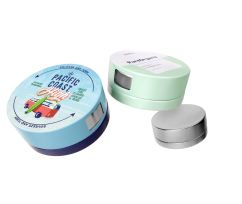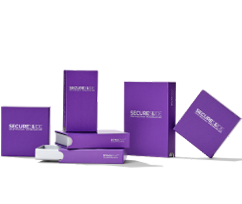13 Easy Ways To Reduce Waste in Packaging
In 2018 alone, 82.2 million tons of municipal solid waste (MSW) were generated by packaging and containers. This figure encompasses everything from broken glass bottles on the corner to the plastic bags that drift down the street and float in the ocean to the cheap water bottles we throw away at events.
Because all this waste is human-generated, the good news is that conscious action can reduce and eliminate that waste. With effort, we can control the amount of waste we produce and reuse and reduce our consumption of certain goods.
From composting the food scraps from our meals to avoiding the food waste generated by grocery stores across the country, there are many ways to help save our environment with more sustainable practices.
This extends to the packaging industry as well, with many options for more environmentally friendly packaging on the table. The following tips are also efficient ways to get closer to a zero-waste environment.
While you might not be able to implement all these recommendations, following just a few will still get you a step closer to sustainability. Today, we’ll review some easy methods for waste reduction in your business’s packaging choices.
#1.) Opt for Recyclable and Reusable Materials
It’s essential to choose reusable or recyclable materials for your packaging. Such materials might include plastic cartons or containers, cardboard, and glass.
For food items, aim to sell products with reusable glass containers for food items. For other products, try to use sustainable and reusable packaging, bags like monomaterial PE bags that your customers can use for home and commercial purposes.
#2.) Encourage Minimal Packaging
Less is more for packaging design, especially when it comes to reducing waste. Minimal packaging means using only one or two types of material, reducing waste and enhancing recycling. This results in a simple but elegant package design that is easy on the eyes of your consumers.
#3.) Use Sustainable Raw Materials
If you’re considering new packaging materials, look for sustainable, biodegradable, or reusable options that help cut down hazardous waste in landfills. For example, consider creating packaging that uses organic materials such as cotton or bamboo.
As a business, you might opt for the following sustainable packaging materials:
- Cellulose packaging
- Corrugated bubble wrap
- Mushroom packaging
- Cornstarch packaging
#4.) Buying a Cardboard Baler
If your company produces large amounts of cardboard, buying a baler is an excellent investment. It compresses the cardboard into bales that are much easier to transport and store than loose sheets.
In addition to saving you time and labor, baling also helps protect your product from damage during shipping. It’s also affordable because it costs just the same as buying a standard cardboard box.
#5.) Practice Waste-Reducing Packaging With Staff
Here are some simple ways to practice waste-reducing packaging with your staff:
- Use reusable bags, cups, plates, straws, and water bottles instead of disposable containers, coffee cups, or cutlery in your workplace. Natural resources reduce your business’s carbon footprint and save you from the cost of buying new materials.
- Use bulk solutions for products like paper towels or toilet paper to reduce the amount of waste your business produces.
- Include a recycling bin in every office space and encourage employees to recycle materials such as paper, plastic bottles, and cardboard boxes that otherwise end up in landfills at home or work.
- Encourage guests to bring reusable containers when they order takeout or delivery for less waste.
Remember that businesses and retailers who are conscious of reducing environmental impact improve their brand image overall.
#6.) Use Sustainable Filling
Replace the use of plastic filling with biodegradable or sustainable alternatives like cornstarch and paper. Packaging that is biodegradable or compostable will greatly reduce waste.
#7.) Buy in Bulk
When possible, buy packaging materials in bulk. Avoid waste and bypass single-serve packaging materials or packages that only serve a select group of orders.
#8.) Reduce Junk Mail
Junk mail is one of the biggest culprits of waste. To cut back on your business’s junk mail, take these simple steps:
- Stop mailing out flyers, catalogs, and coupons.
- Unsubscribe your business from direct mail registries.
- Sign up for paperless billing at utility companies or financial institutions instead of receiving paper bills.
#9.) Instead of Paper, Use Cloth Napkins
Save the environment, help stop climate change, and reduce waste by using cloth napkins. Cloth napkins are reusable, and many come in different patterns and colors that make them fun to use.
#10.) Opting for Polyethylene
Polyethylene is recyclable, which makes it a great sustainable material. Polyethylene packaging is also lightweight, can handle a wide range of products, and reduces freight costs.
As a result, fewer greenhouse gasses are released into the atmosphere, and manufacturers use fewer fossil fuels when making polyethylene or polyethylene packaging. It’s an easy swap to aid your waste management efforts.
#11.) Using Flexible Packaging Instead of Rigid Packaging
Flexible packaging contains materials that readily change shape when you close or fill them. They are usually more affordable than rigid packaging because they consume less material during manufacturing and are more compact for shipping and storage.
Flexible packaging is ideal because:
- It helps products stay fresh and maintain their quality.
- It consumes less space in a shipping container, thus reducing the shipping cost.
- It has a higher product-to-package ratio, therefore reducing waste.
#12.) Use Flexible Child-Resistant Packaging
Flexible child-resistant packaging can be sustainable and comes in premade pouches or on rolls, allowing mass transit on a truck. Child-resistant packaging also protects children against dangerous materials like pesticides, household chemicals, prescription drugs, and OTC drugs.
#13.) Opt for Secondhand or Used Packaging Instead of Buying New
To reduce the amount of waste in landfills or around your immediate environment, try to source and purchase secondhand packaging items. Sites like Freecycle can help identify free items available in your neighborhood.
Use Dymapak Packaging Solutions
Dymapak is the leading producer of eco-friendly flexible packaging materials. We manufacture child-resistant packaging that’s compatible with companies in the pharmaceuticals, nutraceuticals, consumer goods, and cannabis sectors. We also work diligently with Plastic Bank to stop ocean plastic pollution by providing ethical recycling ecosystems.
Why Dymapak Is a Must-Have Packaging Option
Dymapak packaging solutions are a top option for reducing environmental impact. Here’s why:
- Dymapak’s packaging products can be sustainable, reusable, and recyclable.
- Dymapak offers customizable packaging design services that help customers meet their sustainability goals.
- Dymapak uses digital printing technology that consumes less fuel, thus reducing greenhouse gas emissions.
- Dymapak produces flexible and lightweight packaging materials ideal for shipping, storing, and transporting fragile items.
- Dymapak uses recyclable polyethylene films that are ideal for protecting products from contamination and water damage.
- Dymapak works on ensuring a high product-to-packaging ratio to save on cost and space while reducing waste.
Conclusion
We’re all familiar with the reasons why reducing waste is essential. Whether we care about the environment or simply want to save money and time, reducing waste is a great sustainable practice.
As a packaging company, we know better than most that there’s still lots to do to ensure environmental waste reduction.
Luckily, we’ve got your back. Following the above steps and adding Dymapak’s visually appealing, child-resistant packaging to your provider list is a great step towards achieving zero waste.
From tins and pouches to large-scale packaging needs, reducing excess waste is clearly still a critical issue — even after many years in the spotlight. Request a quote today to learn more.
Sources:
Containers and Packaging: Product-Specific Data | US EPA


